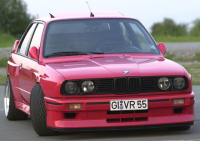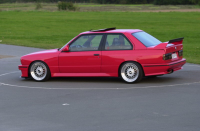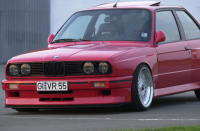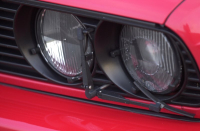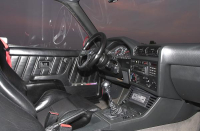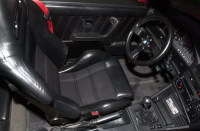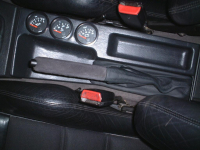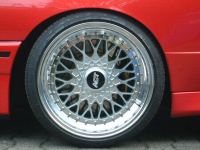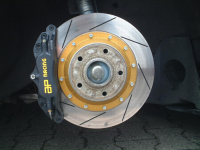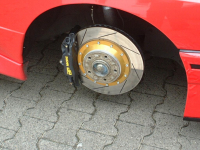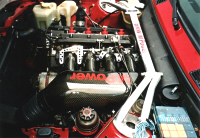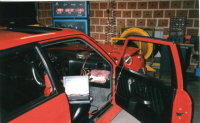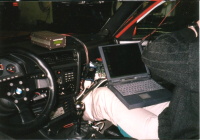|
Markus Glaum e-mail The car has all options, including aircon, cruise control and headlamp wash/wipe.The car was originally built in December 1990 and first registered in May 1991. A total conversion to Sport EVO spec has been carried out. This includes the drivetrain, metal cat converters, exhaust header, complete interior, bumpers front and rear and the lighter Sport Evo windows at the rear. Exceptions are the 2 front fenders. The diff comes out of the Italian version of the M3, the 320is. This car has a shorter rear-end ratio of 3.46, instead of the regular Sport Evo 3.15. The suspension is H&R Group N with height adjustable dampers (180kp). The wheels are ACT 9.5x17 split rims with 225/35/17 Good Year Eagle F1. The track has been widened 10mm at the front and 15mm at the back with the use of spacers. Complete stainless steel Group A exhaust system. Perforated Ferodo brake discs with EBC trackpads. Matter stress bar front and rear. 32cm Raid leather steering wheel. Last year I visited some hill climbs here in Germany. During one of my visits I saw an M3 with the carbon fibre airbox. Based upon the awesome sound and power I decided then and there that I needed one. I bought a replica of the original DTM airbox and all other parts from a guy I know. After that I brought my car to a tuner that has a lot of experience with M3's in all different guises and specializes in building racecars. The tuner asked me if I wanted the additional power to be in the lower or upper part of the rev band. I decided that I wanted the power in the lower
part of the rev band. To gain extra torque 2 rally camshafts were installed.
The cams are 290 degrees at the intake and exhaust side. At the same
time the chain tensioner out of an euro E36 M3 3.2 litre Evo was installed.
Because of the fact that this unit doesn't use the spring, the chain
rattle at start up will never be a problem again. The brakefluid reservoir
needed to be installed elsewhere because of the airbox. This didn't
prove to be a problem as all hardware needed for moving the reservoir
was supplied in the airbox kit. The initial tuning of the Alpha-N unit
was performed on the street with the help of a laptop. The big advantage
for tuning on the street is the possibility to maximize the acceleration
out of corners. The full throttle adjustments were performed on the
dyno. The dyno figures showed a maximum power output of 270 hp. According
to the tuner this could have been 10 to 15 hp more if the head had been
flowed. This would however have influenced the robustness of the motor
negatively. And I rather prefer an engine with a few hp less, but that
holds together.
Bay
Area ///Motorsport
|

